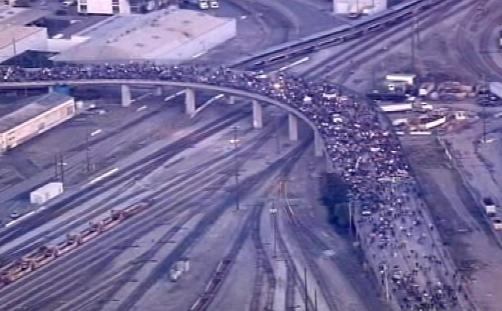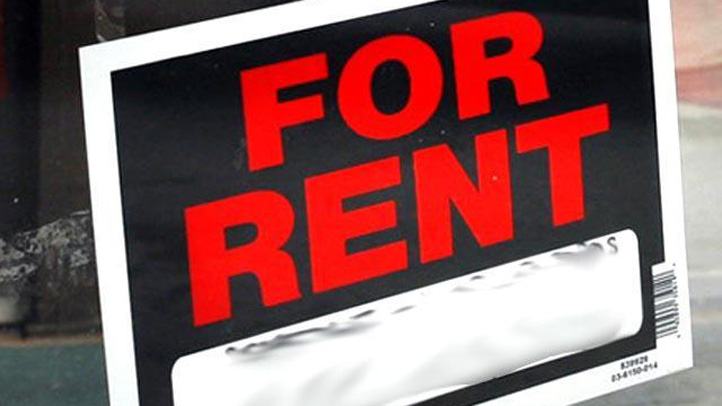Oakland was once again at the heart of the Occupy movement, with coordinated port shutdowns happening from Anchorage to San Diego.
Hundreds of protesters marched to the port of Oakland Monday morning, in a coordinated pre-dawn protest. They tripled their number in the evening with a second march on the port in the 5 p.m. hour. While the morning protest included a few hundred people, the evening march included a few thousand.
Occupy Oakland protesters texted for help late Monday as they planned to stay overnight to disrupt the 3 a.m. shift.
The port said Monday night's protest failed to interrupt port activity because there was no planned activity. They also acknowledged that was in part because of the planned protest. The port said ILWU workers for the three vessels berthed at the port Monday were not scheduled to work.
Officers cleared the roads to make way for demonstrators who were holding signs, waving flags and chanting slogans like "The system has got to die, hella hella Occupy."
The daylong protest began early this morning when hundreds of protesters marched to the port and blocked several entrances.
During the morning protest, police officers were at the scene to block the protesters from entering the port, near the corner of Seventh and Maritime streets.
Local
Protesters were able to block at least two entrances to the Port of Oakland as part of a planned all-day West Coast port blockade.
Dozens of trucks were lined up outside entrances as drivers waited to get into the port.
Mayor Jean Quan issued an open letter to protesters asking "What is the target of this action?" and citing that another shutdown could affect workers' wages as well as the chance to attract business in the future.
By noon Quan said demonstrations had been peaceful. She urged demonstrators to respect the rights of the 99-percent and keep the protests peaceful.

Oakland Police Chief Chief Howard Jordan said there were two protesters arrested at the Ports of America terminal. But there were no reports of violence and one incident of vandalism.
Protesters claimed a small victory when some port operations were voluntarily shut down. A group of protesters gathered at Frank Ogawa Plaza and planned to return to the port late Monday evening.
A group was expected to leave from Frank Ogawa Plaza at 4 p.m., while a second group of protesters was scheduled to leave the West Oakland BART station and march towards the port at 5 p.m.
At the front of the line of the protests, was Iraq War veteran Scott Olsen, who had been injured by a police tear gas canister at an Occupy Oakland rally last month.
Omar Benjamin with the port said demonstrators had caused sporadic slow downs but the port was still operational.
But still about 150 longshoremen were sent home "with little to no pay," according to The San Francisco Chronicle.
Benjamin said he saw backups of trucks and while the port is in the middle of its peak season, it remains in full operations.
"We stress again: it’s important to keep the Port open so that workers can make a living, the port can continue creating jobs, and we all take steps to improve economic opportunities for the community and the region," the port's Communications Manager Robert Bernardo said in a statement.
Dan Siegel, an Oakland attorney and the former legal aide to Quan who resigned when police first raided the Occupy protests at Frank Ogawa Plaza, was part of the blockade Monday.
The Bay Citizen reported that the coordinated West Coast efforts are part of the long-standing labor dispute between the International Longshore and Warehouse Union workers and grain exporter EGT in Longview, Wash. The company's business with the port of Oakland are unclear.
The group is part of a larger effort to shut down ports across the West Coast. The Occupiers have added a makeshift raft in Lake Merritt to its high-profile protest.
Bay City News contributed to this report.



